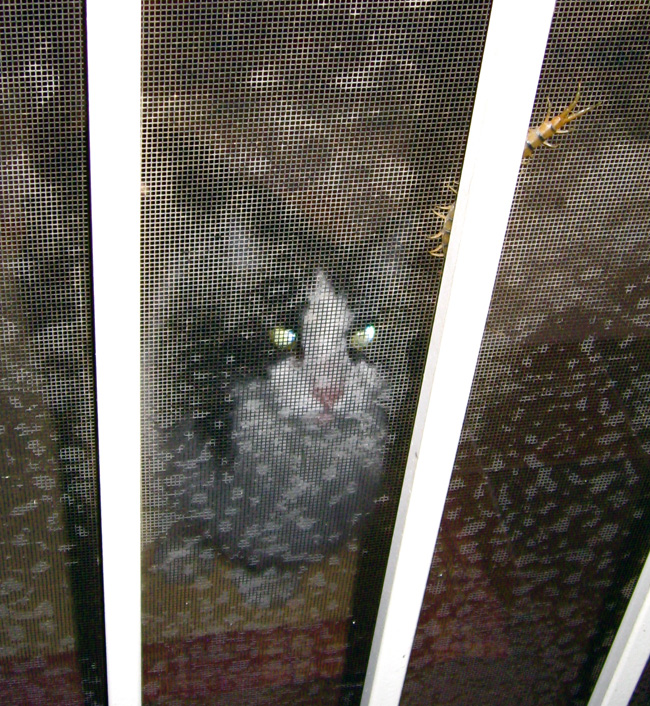We call it “The Rock Lobster”…
…but it’s not from the bottom of the sea. If you had a hard time with the centipede or the solpugid, you may wish to look away. Or not…
This is one of my favorite desert arthropods ever, in kind of an oscillating horrified/fascinated can’t look away from photos of the train wreck kind of way.
It’s a Tailless Whip Scorpion, or an Amblypygid. Let me just say at the outset that it is completely harmless to humans, and has neither stinger nor venom nor powerful jaws like its “cousins” scorpions, spiders, or solpugids. Like them, it’s an arachnid, but it has its own Order, Amblypygi. It’s got narrow pincer-like pedipalps to capture and hold its small pray items which it detects with the long sensory appendages. The other six legs (as an arachnid, it’s got 8 altogether) are used for scuttling about.
The other six legs (as an arachnid, it’s got 8 altogether) are used for scuttling about.
>>A live “Rock lobster” on our front cinderblock wall; note that I do not have my hand nearby for scale. Also note that the entire creature is not in the photo: at least another two-inches of “feeler-leg” is out of frame in the upper right. (Photo E. Shock)
But, it’s really big. A few years back, I found one in the garage, all folded up with its legs held close to its flat, broad, segmented body. Hoping to liberate it back to whence it came (the wash in our yard), I approached it with a glass jar and a postcard. It saw me and moved a few feet away, very quickly and sideways like a crab. Then it extended its long front pair of legs and suddenly my Bonne Maman jam jar seemed totally inadequate. I had to get a plastic Trader Joe’s ginger cookie container and a 9×12″ manila envelope to cap it off with, so as not to crush the lil dude’s end leg segments. Capturing the fast-moving skitterer involved two of us, a fair amount of herding and chasing, and some undignified screeching as feelers encountered fingers. An odd sensory relic of this capture is that, having just bought new tires for the Honda, the whole garage smelled strongly of new rubber: the whipscorpion’s shiny black exoskeleton looked like a plausible rubbery source of this odor, and every time I’ve seen one since, my mind’s nose smells new tires.
It’s been a while since we’ve seen the “Rock Lobster” — we’re due for a sighting, and this is the perfect time of year to find them abroad on warm Monsoon nights.
Here’s a pleasant fact about tailless whip scorpions, courtesy Wikipedia:
Amblypygids, particularly the species Phrynus marginemaculatus and Damon diadema, are thought to be one of the few species of arachnids that show signs of social behavior. Research conducted at Cornell University by entomologists suggests that mother amblypygids communicate with their young by caressing the offspring with her anteniform front legs. Further, in an experiment where two or more siblings were placed in an unfamiliar environment, such as a cage, they would seek each other out and gather back in a group.
Is that not adorable?












